Art Stations | The coolest of the Naples Metro (Map included)
This post includes affiliate links. As an Amazon Associate, I earn from qualifying purchases. Full disclosure.
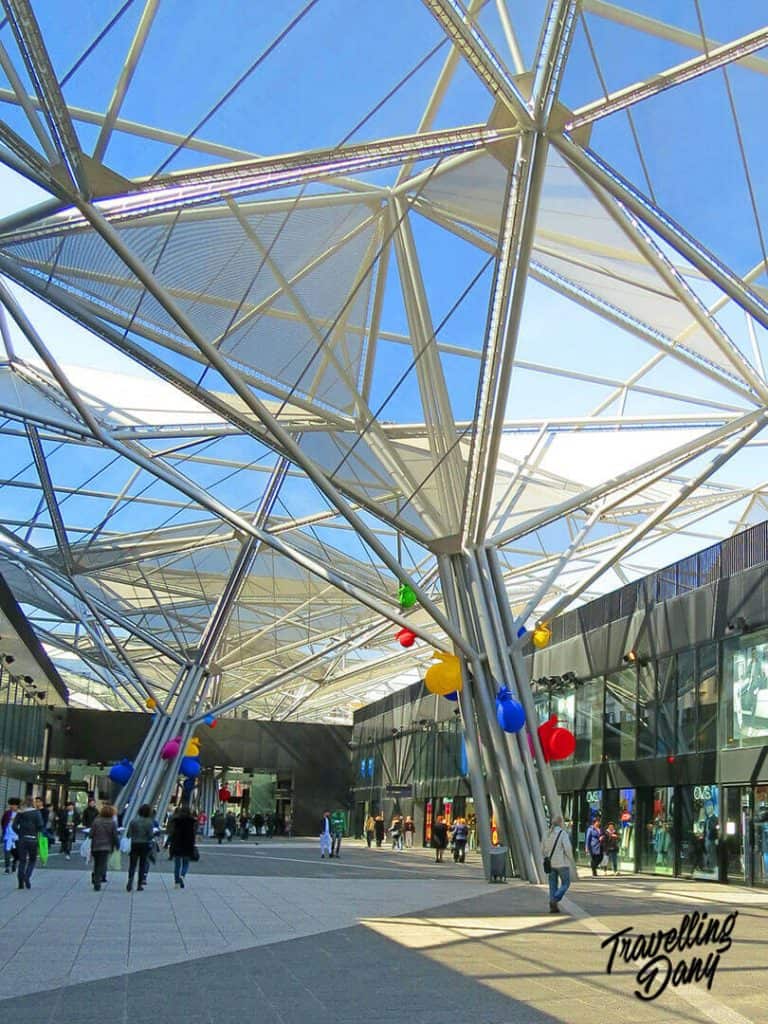
Visiting a series of cool, contemporary museums for free while riding the subway is probably one of those awesome things that you should never miss, especially in the South of Italy. The Art Stations of the Naples metro in fact provide an unconventional and yet particularly interesting way to learn how much the city has changed: vibrant colors, music, photography and historical testimonies. They are one of the smartest way to explore all the things to see in Naples, especially if you visit Naples in winter, as you won’t have to walk in the rain. Let’s see how!
Planning your trip to Naples last minute?
If you’re booking your trip to Naples (Italy) and you are in a hurry, I can help you!
Below you can find some of our favorite tours, hotels and more!
Top Experiences and Tours in Naples:
1. Naples Underground: Entry and Guided Tour
2. Sorrento, Positano and Amalfi Tour
3. Pompeii and Mount Vesuvious Full Day Tour
4. Catacombs of San Gennaro: Entry and Guided Tour
Our Favorite Hotels in Naples:
1. Grand Hotel Vesuvio
2. Hotel & Apartments Piazza Bellini
3. B&B Hotel Napoli
Click to check out the updated rates for renting a car!

WANT TO LEARN NEAPOLITAN DIALECT?
I can help!
Subscribe to our FREE “One Neapolitan Word per Week” Newsletter.
You’ll receive one email every week with one Neapolitan Dialect word, with info on how to write it, how to pronounce it, how to use it on your next trip to Naples, and what it really means for us.
Written by a local and authentic: what are you waiting for?
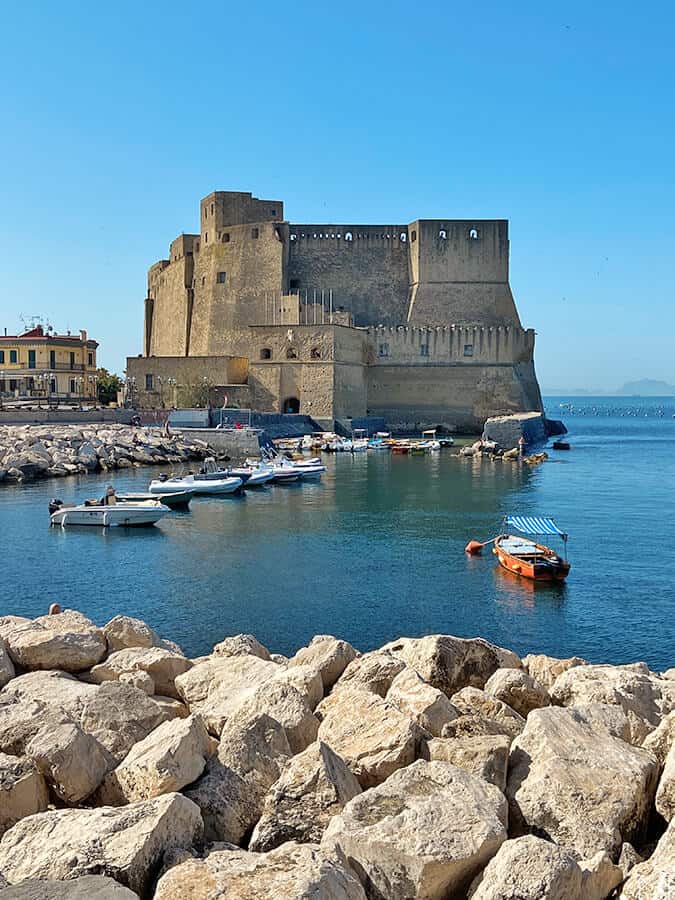
Quick Links to Post Content
Naples Metro: Where to find the Art Stations
The Art Stations of the Naples Metro are a project that was born as an upgrade to the very old metro stations in Naples. Combining public transport and contemporary art was meant not only as a way to make it all pretty, but as a method to promote art and culture.
All the new stations can be found on Line 1 and Line 6 of the Naples Metro and they include more than 180 works of art. The artists who created all of Naples subway art on display are international well established names, but also young local (and yet not famous) architects. The eclectic mix also helped to offer different styles for every metro station. We’ll check them out one by one with this virtual tour.
Consider these lines also if you want to spend the day at one of the amazing beaches in Naples.
Going by metro and bus is waaaay easier!
Will you visit Naples in the warmer months? Read this awesome guide to what to wear in Italy in summer to make sure you avoid a few common travel mistakes!
According to Naples Municipality, we should expect more Art Stations in the years to come. And we definitely can’t wait to see what they come up with! Hopefully tourists won’t be too scared from the fake news to visit Naples! Besides, if you are still trying to decide where to stay in Naples, you could definitely find lodging near Line 1 which is full of options: that way you’d basically be able to explore all the Art Station while visiting the city, without having to go out of your way to find them!
To visit the Art Stations you will just need a TIC, a ticket that you can use for the public transport in Naples. You can buy it at the vending machines in the stations, but also at any of the authorized newsstands in Naples. The single ride will cost you 1.10€. To save money for your trip, I suggest you buy a 90 minute ticket (1.60€) or a daily ticket (3.50€) according to how much you will use the public transport in Naples.
If you are planning to follow my itinerary for the best things to see in Naples or if you are spending a romantic couple of days in Naples, there’s a way to save on public transport. In fact more than 4 days in the city mean that you will save more buying a weekly ticket (12€). Please be aware of the fact that if you are planning to visit Mount Vesuvius, this ticket won’t cover the route to the national park.
Here you can find the interactive map to the Naples Metro, and here you can download a pdf with the map that you can download on your phone (very useful if you won’t travel with an Italian SIM card!).

FREE 89 Page Italy Travel Guide!
Are you in love with Italy?
Me too!
Allow me to gift you my new e-book “La Dolce Vita“.
An 89 page guide about visiting Italy, written by me, with curated tips on everything you will need, as well as updated info and lesser known fats about my beloved Italy!
Click to download!

Garibaldi: Mirrors, steel and… snails
Garibaldi is the most important train station in Naples. Here in fact you will be able to hop on a fast train to Rome or Milan, or just find your way to your hotel. The area has been completely upgraded and it now includes a shopping center and restaurants how to tip in Italy(make sure you know , please). It also offers free WiFi and if you are very lucky one of the interesting events that take place in the shops, like free make-up sessions or fundraisings for Save the Children and many others.
Once you climb down the stairs to a big square inside the station, you will immediately notice colorful snails climbing up on steel pipes. This area offers some shade where tourists and locals can hide from the scorching heat we have to deal with in the summer time. From here you will also be able to access the shopping area.
A series of futuristic escalators that mix steel and LED lights will lead you down to the Naples Metro. The first work of art is a huge mirror where you will see life sized figures of travelers. At first sight it’s almost disconcerting: it’s so much realistic that you will feel like there are real people in line in front of you. This is an interactive work of art. If you step close enough, it will look like you’re part of the artwork.
The Naples subway platforms at Garibaldi are inspired to the London tube.

Love Neapolitan Food?
Grab my FREE Neapolitan Recipes Booklet here!
It’s filled with nonna’s recipes: the authentic, traditional Neapolitan dishes we all love here.
Which mean “family” to me.
You’re welcome to use them and if you love’em like I do, just send me an email and let me know!
Museo: History and travel photography
The Museo Station has been designed by Gae Aulenti and opened in 2001. At first the visitors will be confronted with a series of big panels with photos by Mimmo Jodice, representing sculptures found at Villa dei Papiri in Herculaneum. Even the outside of this building seems to be inspired to the history of Naples. It’s been painted in what we call “rosso pompeiano“, a particular shade of dark red that was pretty popular in the ancient city of Pompeii.
The station is pretty close to the Museo Archeologico Nazionale, which has the same design on the outside.
In the hall of the Naples Metro Museo there’s an impressive replica of the Ercole Farnese, a sculpture you will be able to see in the nearby Museum, and a cast bronze of a horse’s head named “Carafà“.
The whole station is dedicated to history, representing it not only through sculptures and casts, but also through many black and white photos.
In the corridor that leads to the Archaeological Museum, there are 9 statues representing the most important years in the life of artist Luciano D’Alessandro, and historical pictures showing Naples seen through a series of details.
Just like a free, underground museum, you will then walk past “India ’70“, a photography exhibit with photos shot by Fabio Donato during his trip to India, and other pictures from the photogographer showing his appreciacion for the opera in Naples.
On the corridor that leads to the Piazza Cavour metro station you will also find another photography exhibit with images by Raffaella Mariniello, representing the suburbs of Naples.
Materdei: Mosaics and bronzes
The Materdei station in the Naples Metro was opened in 2003 and designed by Alessandro Mendini. You can access it from piazza Scipione Ammirato at rione Materdei. This square is a pedestrian area with nice gardens and contemporary artworks scattered all around. Outside the metro station there’s a bronze statue by the artist Luigi Serafini, named Carpe diem, and colorful pottery covering the elevator entrance.
The main highlight is a big mosaic with a yellow and green star. Inside, the station is very colorful thanks to colored glass and steel (making it similar to the Salvator Rosa station). Like everything else, the main colors are green and yellow.
Mosaics cover almost all the walls of this subway station. One of the most beautiful can be seen near the stairs that bring the visitors to the platforms. Made by Luigi Ontani, it represents fantastic beasts, the Neapolitan figure of a scugnizzo (Neapolitan dialect indicating street kids), and Pulcinella: we already talked about this theater mask in our article on Via San Gregorio Armeno. Yet in this artwork, the artist himself put his face under the mask of Pulcinella, becoming part of the mosaic.
While you wait for the subway on the platforms, don’t forget to have a look at the wooden panels by Domenico Bianchi, the Wall Drawings by Sol LeWitt, and polychrome serigraphy by Mathelda Balatresi, Anna Gili, Stefano Giovannoni, Robert Gligorov, Denis Santachiara, and George Sowden.

Toledo: The most beautiful metro station in Europe
In 2012 The Daily Telegraph awarded the title of most impressive metro station in Europe to Toledo. And again in 2014 the CNN has named it the most beautiful station in Europe.
I’m saying this to prepare you to an immersive and quite amazing experience in the undergrounds of Naples. Toledo station was designed by Oscar Tusquets Blanca and it was opened in 2012. You can access it from Via Toledo, the shopping street where I always stop to eat some of the most delicious foods you can find in Naples.
The theme is water Blue Grotto in Capri(some say it reminds them of the ), as you can also see from the picture. In fact this metro station was built under an aquifer: it goes down 50 meters. Outside there are 3 hexagonal pyramids covered with ocra yellow and blue panels. They send colored, natural light to the first level of the metro station. On the Via Diaz entrance there’s a steel sculpture representing the Knight of Toledo, by William Kentridge.
When you get inside, you’ll walk down a long corridor with big orange circles and benches made with volcanic stone from the Vesuvius. In the hall the two beautiful mosaics by William Kentridge represent the mythology figures of the Neapolitan culture, including San Gennaro, and symbols indicating the Parthenopean Republic of 1799. You can see one of them in this article, named Ferrovia Centrale per la Città di Napoli.
In Naples when we dig to make a new subway there’s always the risk of finding remains from our past. It happened at the Toledo station as well, so the designers decided to integrate the remainings of the Aragon walls found while working on this project and show them to the public. Another museum-like area that you can visit for free.
The most famous area of the Toledo station is the Crater de luz, shown in the picture above. You will walk into an eerie area, with classical music coming from the speakers, feeling like you are waltzing into another world. Or even better, under the sea, according to what the artist Robert Wilson wanted to represent. This white cone crosses all the levels of the Toledo station, lighting up the inside with natural light and LED lights.
It’s quite common to find tourists going on the escalator, with their nose up in the air to see the cone from underneath… and then they just hop on the escalator on the other side to climb down and stare some more. You just can’t get enough.
Usually me and Aldo walk outside (enjoying the show), get ourselves a delicious Neapolitan coffee on the other side of the street… and get back to the Toledo Station for another ride!
Via Toledo is also a great place to go if you’re looking for Italian souvenirs!
From the platforms to the Crater de luz, there’s a long corridor with animated panels representing the sea, and Men at work by Achille Cevoli, a thank you to the men and women who worked hard to build the Art Stations in Naples.
If you’re planning to discover all the hidden gems in Naples, then you should add Toledo to your itinerary. Worth the visit for sure!
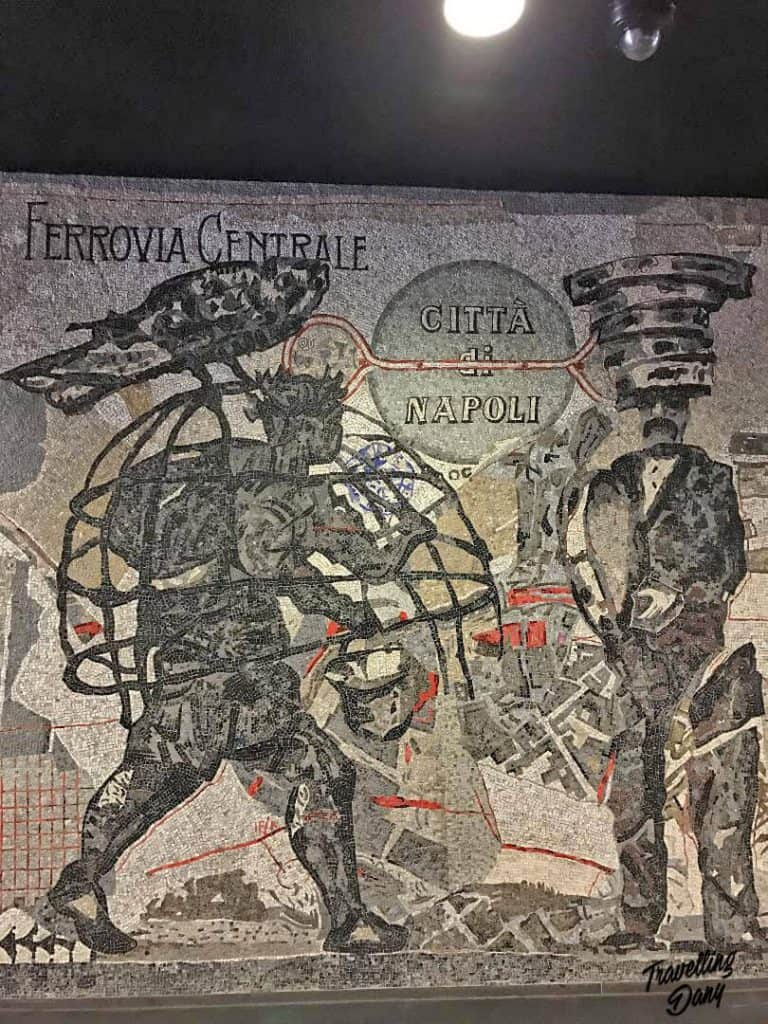
Salvator Rosa: Art and traditions
Salvator Rosa in the Naples Metro was designed by Alessandro Mendini and opened in 2001. You can access from via Salvator Rosa in the Arenella district, after you cross beautiful gardens. Outside of the metro, the surrounding buildings have been morphed into works of art: make sure to explore the area because you will also be able to see a Roman bridge and a neoclassic Chapel.
The gardens are divided into several levels that you access through an escalator. Families love to visit the kids area which was specifically designed by Salvatore and Mimmo Paladino to represent the joy of youth.
The access is of course free. In the park you will also find many contemporary artworks by international and Italian artists: marble, steel and colored glass make it a very cool area of Naples. The best part of it? It’s still unknown to the mass tourism so it’s unlikely that you’ll find it too crowded. In this area you will also find a lot of cheap foodie options because there are little restaurants that still use the Italian traditional recipes we all love.
Inside the Salvator Rosa station, on the platforms there’s an artwork named A subway è cchiù sicura (a mix of English and Neapolitan dialect, translated as “The subway is safer“), representing three Fiat Cinquecento with covers on them to keep them “safe”.
If you walk to the second exit on Via Battistello Caracciolo, there’s many colorful ceramics that you can see, by Enzo Cucchi, and a beautiful artwork by Lello Esposito, Eccomi qui (Here I am), representing Pulcinella overlooking the road from above.
Not too far away there’s the building where the author of the world famous song ‘O sole mio, Giovanni Capurro, used to stay.
Quattro giornate: Gardens and aluminium
Quattro Giornate in the Naples Metro has been designed by Domenico Orlacchio and was opened in 2001. It serves Piazza Quattro Giornate, the Arturo Collana stadium and part of the Vomero district in Naples. The main entrance to this Art station is again embellished by gardens and this time by modern sculptures. One is a V shaped sculpture by Renato Barisani and the other two are bronze statues representing athletes, by Lydia Cottone.
Just like the square, also the metro station is dedicated to the Four days of Naples, a civil uprising in 1943 against the Nazi forces occupying the city during World War II (maybe now it’s more clear why I was so adamant on my need to visit Auschwitz).
In the hall you will see bronzes and paintings by Nino Longobardi, inspired to the civil uprising and showing some of the most important moments of the Four days of Naples.
On the corridor that leads the visitors from the platform to the main hall there are more paintings from Sergio Fermariello, the aluminium sheet lit up with optic fiber by Baldo Diodato and Sabe que la lucha es cruel (Translation from Spanish: Know that battle is cruel), a serigraphy on five panels, by Anna Sargenti.
Three more panels hanging on the walls on a metal installation have been created by Umberto Manzo with an innovative technique, the photographic emulsion. In the station there’s also a light box with the image of the author Betty Bee inside, and four female figures dressed in white, Le Combattenti (The fighters), by Marisa Albanese.

Università: Modern art and a splash of color
The Naples subway stop Università has been designed to offer inspiration and a splash of colour to those who hop on the metro in the morning to go to work or to go to University, by the architects Karim Rashid and Alessandro Mendini. Opened in 2011, it serves Piazza Giovanni Bovio and Corso Umberto I (another great shopping area).
It’s by far the most eclectic and colorful one of the Art Stations in the Naples Metro, inspired to the digital era and the Internet language. In fact on some of the panels next to the stairs you will find ceramics with words like database, network, software on them.
The main hall of this station is a splash of acid green and LED panels with colored shapes on them. As you walk further inside, on the shiny metal walls the chromatic contrast between hot pink and fuchsia seem to direct the travelers towards the metro platforms.
If you step inside from Piazza Giovanni Bovio, you will see two pretty big black pillars. If you look long enough you will recognize the shape of two faces seen from the side: they represent the importance of conversation between humans. The shapely steel sculpture that you can see on the picture on this page is Synapsi, and it represents human intelligence and the neural system in our brain.
While you walk inside the Università station, you will see that both on the walls and on the floor everything is baby blue, yellow and green, or orange and pink: someone thinks it looks like one of the iconic digital bars and clubs in Tokyo.
On the second level, if you step back while watching the stairs, don’t be surprised to see that the steps create the shapes of Dante Alighieri and his Beatrice Portinari, to represent the importance of the bond between culture and modern art.
Vanvitelli: blue neon tubes
You can access this station on Piazza Vanvitelli, in the South part of the Vomero district.
It is completely colored in blue, liliac, yellow and grey.
As soon as you get inside you will see an artwork by Giulio Paolini: it looks like a huge rock trying to break through the glass cage that is holding it back. Along the corridor, two stripes by Vettor Pisani represent the Eastern and Western Countries.
The highlight of this Art Station is the huge neon spiral hanging from the ceiling, by Mario Merz. This artwork, the last one created by this artist before he died, moves down towards the intermediate level, where it turns into prehistorical animals. Next to them, two steel stars by Gilberto Zorio. Walking towards the platforms, eight cylinders, called Pozzi, have been created using metal, crystal, wax and glass.

Dante: Neon sign with lines of poetry
The Dante station in the Naples Metro is situated near Piazza Dante and was designed by Gae Aulenti. The architect also reorganized the square, without disrupting the original structure dating back to the 1700. For the pavement she used volcanic stone from Mount Etna in Sicily and followed the same scheme designed by Vanvitelli.
Inside the metro station there are many modern and conteporary artworks, like frescoes by Carlo Alfano, or Universo senza bombe (Translation from Italian: Universe without bombs), a huge mosaic with ovals and geometric figures guiding the travelers towards the platforms.
In this Art Station there are two of my favorite artworks. One is by the artist Jannis Kounellis, who created a long steel panel on which there are tracks blocking several objects: a hat, a jacket, toy trains and many shoes. It is particularly big and evocative.
The second one is located before the escalator that leads to the platforms. It’s Queste cose visibili (Translation from Italian: These visible things) by Joseph Kosuth. The huge neon sign shows the following lines (in Italian) from the Convivio, written by Dante Alighieri:
Lo colore e la luce sono propriamente; perché solo col viso comprendiamo ciò, e non con altro senso. Queste cose visibili, sì le proprie come le comuni in quanto sono visibili, vengono dentro a l’occhio – non dico le cose, ma le forme loro – per lo mezzo diafano, non realmente ma intenzionalmente, sì quasi come in vetro transparente. E ne l’acqua ch’è ne la pupilla de l’occhio, questo discorso, che fa la forma visibile per lo mezzo, sì si compie, perché quell’acqua è terminata.
(Dante Alighieri, Convivio, Trattato III, Capitolo 9)
Rione Alto: Light boxes and decorative panels
The Rione Alto subway in Naples serves the hospital area of the city. The entrance is made in glass and steel domes, and there’s a beautiful fountain on the front, decorated with a mosaic by Achille Cevoli.
On the inside you will see many wall drawings by David Tremlett, painted with pastels on the wall. And between the escalators, decorative panels by Giuseppe Zevola, photos by Katharina Sieverding and two light boxes by Bianco & Valente, hanging on the tunnel that lets you walk to the platform.
As you walk towards the exit, you will also be able to see many more modern and contemportary works of art created by Italian artists.
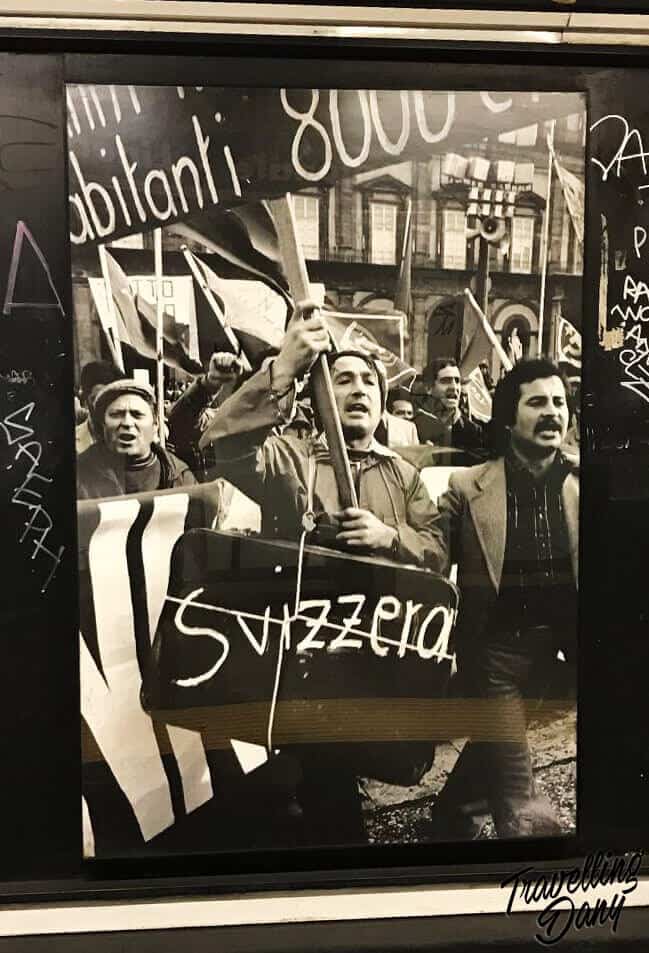
Piscinola: colorful urban art
The Piscinola metro station is the end of Line 1 (the other one being Garibaldi) and was originally called “Piscinola-Secondigliano“.
The station is built on two levels. On the first one there’s the metro station, Line 1. On the lower one there’s the Arcobaleno Line (Napoli-Aversa). The municipality of Naples has decided that this line in future won’t end at Piscinola anymore: it will in fact serve also the Capodichino Airport and the Centro Direzionale (the modern skyline of Naples).
All the station is dedicated to the artworks of Felice Pignataro, who painted colorful murals in Scampia, a difficult area of Naples, making the streets brighter and lively. His own way to offer some hope to the children living in this district.
You might also like:
What to eat in Naples
Naples neighbourhood guide – where to book your hotel
The best 45 things to do in Naples
How to spend one day in Naples
Naples cafes and how to drink espresso
Is Naples really dangerous?
Pompeii travel guide from a local
Riding the art metro in Naples
Hiking Mount Vesuvius – how to get there
18 lip smacking street foods in Naples
How to visit Naples Christmas Alley
Procida island travel guide – Our hidden gem
20 best destinations in Europe for a fall trip
30 different types of pizza you should eat in Italy
22 Amazing Day Trips from Naples (Italy)
10 Completely Free Things To Do in Naples (Italy)
Do you need ETIAS Authorization or Visa to enter Europe?
Guide to the best time to visit Italy
Ultimate guide to the best movies set in Italy
Pin it for later!
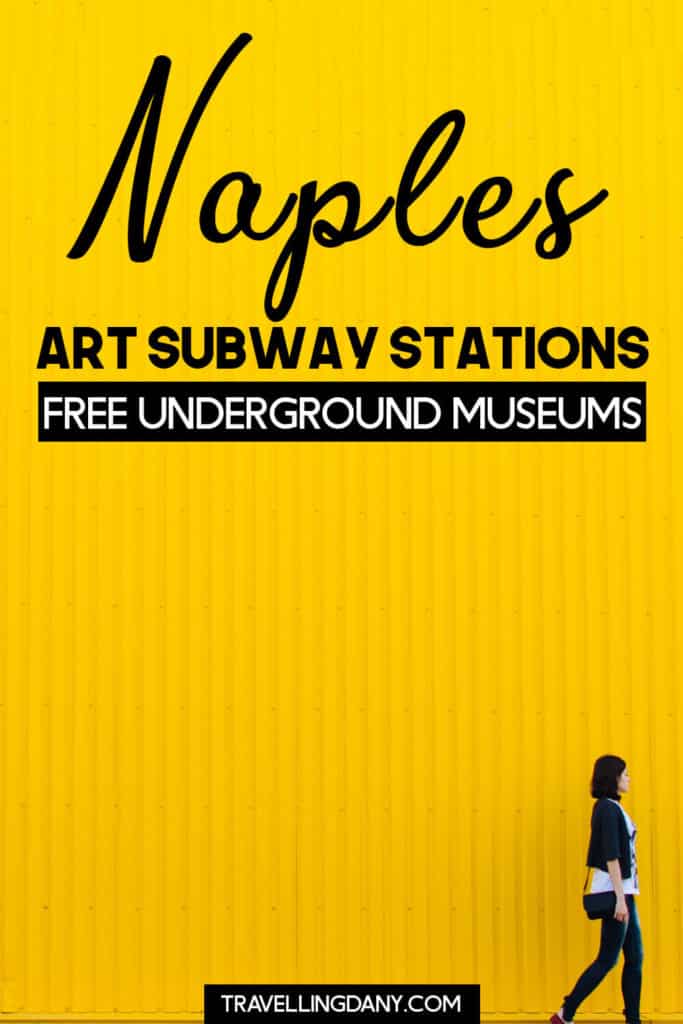
Travelling Dany – Danila Caputo
Danila Caputo is a bilingual travel writer living in between Naples and the Amalfi Coast (Italy), graduating from the University of Naples Suor Orsola Benincasa in Foreign Languages and Literature. She travels and works with her husband Aldo, photographer and videographer. Their blog chronicles their adventures around the world, their love for the USA (where they have family), Italian/European culture and tips on how to be responsible travelers. You can find out more about their latest trips and their life on Youtube, Instagram and Facebook.

These metro stations are incredible and I love the idea of getting art in front of people more. Toledo station is incredibly beautiful and it is easy to see the water theme here. I was in Naples in 2016 and I do recall the station we boarded being very beautiful but I had no idea that it was a whole initiative and that there were more stations with different art themes.
Yes they really are 🙂 But hey now you have the perfect excuse to come back for more, in case pizza wasn’t enough! 😀
I’ve only been through the train station here! Not the greatest impression of Naples, I must say. I’d love to go back and actually visit, for real this time. And I’d like to go to some of these places that you visited, too! See the history and art in the city. I adore Italy!
Can I ask you when you visited? I’m sorry that you didn’t get a good impression of my city, as I already mentioned, it’s completely changed the last 5-6 years, as it has gone through renovations, becoming more “tourist-friendly”. Naples is a city full of history and art, wherever you go, so much so that you will find it everywhere you go, often for free. 🙂 Should you come back for more, I suggest you read some of my articles with tips from the locals, to make the most out of your vacation 😉
Bringing art out of museums and into the public domain is a great initiative. The Metro, of course, is ideal for this as a place where the public goes in large numbers. The artwork in the metro stations is really so vibrant and colourful. Really a great tribute to the creativity of the artists.
Yep it’s a great project and I hope it will become even bigger! 🙂
I was just reading about a fantastic food tour in Naples – I’m starting to think the universe is trying to send me a message about my next travel destination. This looks gorgeous!
Definitely! The food in Naples is delicious! Here you can find my suggestions with spots where the locals go to eat: cheaper prices and best food 😉
I am not much of an art lover and have never heard of this. It does definitely look pretty cool though and would be a nice distraction from the usual dull subways
Because this is a different kind of art you could always give it a shot, at the latest, as you mentioned, you’d still have just a pretty subway station. 🙂
I have visited many metro stations around Europe and I must say that the Toledo station is very impressive indeed. The only metro stations that I can compare it with are the ones in Stockholm (especially T-centralen)!
I really want to visit the ones in Stockholm!! I’ve seen pictures and they look SO beautiful!
Wow, just yesterday I read about Naples and Pompeii and now you show this very contemporary aspect of the city. Toledo station gives an impression as if it is going to take you on a space odyssey. Interactive art would be interesting to see too.
I hope you were reading good news about my city! 🙂
This is crazy! I knew some cities in Europe (as well as Montreal) had artsy metro stations, but I had no idea Naples was one of them! Another thing to add to my bucket list 🙂
I’m sure you won’t be disappointed 😉
I had no idea about these Art stations of the Naples metro, but I’ve not visited the city for 20 years and I don’t think we even used the metro! I love the idea of being able to enjoy modern architecture and art while you are travelling between other sights!
I totally thought that interactive mirror at Garibaldi was all real people until I read your explanation!
You have to come back! The city has changed so much, especially the last 5-6 years! And lol the first time I saw the interactive mirror it scared me half to death! 😀
Never knew of the art in Naples! I had skipped out on Naples after hearing mixed reviews, but seeing this post makes me wish I had gone there, next time! The mirror art of the waiting passengers made me jump a bit too!
Check out my other articles then, Naples has so much to offer. 🙂 I’m sure you’ll be surprised at how many things you can do in Naples!
I love posts like this. I think more cities should take a leaf out of Naples and provide free art for all. Toledo station looks particularly pretty, I love the mosaic structure on the high ceilings, almost looks like a luminescent cave in your picture. Great work Dany.
Naples loves to promote culture and art so I think it’s a project that fits perfectly well! 🙂
Wow!!!! This is amazing.. Such beautiful work of art and for public consumption!!!! I have never seen that. I read about Camile Vallala’s design projects in London and how the spaces influence creativity and foster community. This project takes it up a notch. I wish Sydney trains would do this.
I hope to visit these soon. Thank you for sharing
Fingers crossed that you get to see the Naples Metro soon! If you love art and design you won’t be disappointed!
Awwwwwnwnnnnn. The metro stations are beautiful. Media is fond of misrepresentation (I had thought nothing good can come out Naples. These art works are distinguishable from others I’ve seen and what a sight it’ll be to explore them in person.
Well then you might find useful to read a few of the several articles I have on Naples. You might be surprised to know that my city not only is safe but full of art and beauty. 🙂
Naples’ metro stations look simply amazing. I remember watching a documentary on Toledo Station and immediately telling myself that, when I’ll get to Naples, I have to see it. Now, I discover that there are many other true treasures – Quattro giornate and Vanvitelli will definitely be on my travel itinerary!
A documentary on Toledo??? How cool, I still haven’t seen anything like this, I’ll definitely have to google now!
I’m heading to Naples in two days and had no idea about the artwork in metro stations. Looking forward to seeing it all!
Yay! I’m glad the article was useful! I look forwards to hear how you liked Naples!